http://www.firstpost.com/business/why-did-the-government-continue-importing-pulses-when-domestic-production-was-growing-3430972.html
Pulse of the nation – III
A story of how pulses imports drove domestic growers to the ground
Part I – Introduction. Misplaced fallacies.
Part III talks about India’s pulse production – how it has grown and how it continues to grow. And how this has hit farmers very badly, partly because they succeeded, and partly because of the state’s ineptness.
============================
The story of India’s agriculture is often determined by a very shortsighted focus of the country’s planners. The prime minister may have great plans. But the inability on the part of the government to have a capable minister for agriculture who can anticipate trends, and then work towards tweaking policy accordingly, has hurt agriculture.
This is where the story of pulses begins.
Even as early as in 2014, all planners were aware of the weakening growth in demand for cereals like rice or wheat. These were crops that were in demand when India was poor and hungry. Lal Bahadur Shastri (India’s prime minister immediately after Nehru) realised the need for the country to refocus its vision towards agriculture. He was the one who coined the memorab le phrase – Jai Jawan, Jai Kisan.
He was the one who pushed India’s agricultural universities to develop new varieties of wheat and rice, which eventually resulted in a new strain of wheat that would boost India’s yields. The sowing of these high yielding variety wheat took place during Indira Gandhi’s prime ministership, and she (naturally) took credit for the green revolution. Once again, it was Shastri who transferred NDDB (National Dairy Development Board) to Verghese Kurien who used it to finance the milk cooperative movement, and to build India’s largest agricultural brand – AMUL.
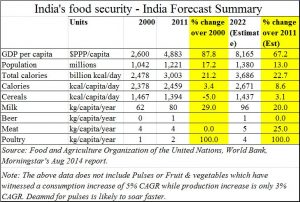 Few have pushed that kind of long-term vision in India. Prime minister Modi did this while he was chief minister of Gujarat. But thereafter, his focus has been on other issues and the focus on agriculture at a national level has been found wanting. What was done at the state level needs to be expanded to the national level now. But let’s return to pulses.
Few have pushed that kind of long-term vision in India. Prime minister Modi did this while he was chief minister of Gujarat. But thereafter, his focus has been on other issues and the focus on agriculture at a national level has been found wanting. What was done at the state level needs to be expanded to the national level now. But let’s return to pulses.
Once India had enough food (read rice and wheat) to eat, and as liberalization created a rapidly growing middle class, almost every agronomist knew that India would now begin to consume more of fish, meat, pulses, eggs and milk (among other things like fruit and vegetables). The growth rate for wheat and rice was bound to decelerate — see chart.
Pulses production was bound to grow. And this growth was triggered partly a growing demand. It was also triggered by increasing pulses prices. Watch how tur dal and moong dal prices had continued to climb for three years at a stretch. Moreover, their prices were also almost three times those for wheat and rice (excluding basmati rice which is not procured, but exported by private traders).
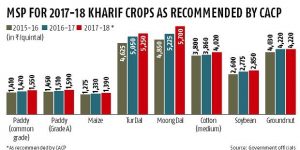 The big question, obviously was – if wheat and rice prices were lower than those for pulses, why did farmers not switch to growing pulses instead? The reason was simple. The largest of farms had a cozy arrangement with the Food Corporation of India (FCI) and other state trading corporations (STCs) which were mandated to rice and wheat procurement. So, large farms remained loyal to wheat and rice. They had a guaranteed offtake. And the profits were good.
The big question, obviously was – if wheat and rice prices were lower than those for pulses, why did farmers not switch to growing pulses instead? The reason was simple. The largest of farms had a cozy arrangement with the Food Corporation of India (FCI) and other state trading corporations (STCs) which were mandated to rice and wheat procurement. So, large farms remained loyal to wheat and rice. They had a guaranteed offtake. And the profits were good.
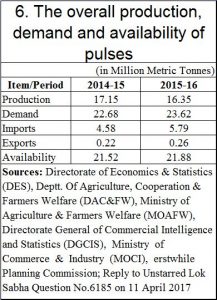 Only smaller farms, that were often abandoned by FCI and STCs, opted to grow pulses. And even though the market price was high, farmers got very little. The bulk of the profit went to middlemen. And the story of growing domestic production supplemented by imports was one which remained constant for a long time. The figures for the last two years are a good indication (see chart).
Only smaller farms, that were often abandoned by FCI and STCs, opted to grow pulses. And even though the market price was high, farmers got very little. The bulk of the profit went to middlemen. And the story of growing domestic production supplemented by imports was one which remained constant for a long time. The figures for the last two years are a good indication (see chart).
Local growers of pulses were therefore not too encouraged by the actual prices they got for growing pulses. Acreage under pulses kept growing and shrinking, depending on the whims and exigencies of small and marginal farmers.
Hence 25 million hectares under pulses cultivation in 2013-14 shrank to 23.5 million hectares in 2014-15, then increased marginally to a bit under 25 million hectares in 2015-16.
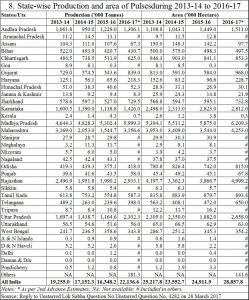 Then, possibly seduced by the high international prices and the continued growth in demand, acreage under pulses jumped to almost 29 million hectares in 2016-17.
Then, possibly seduced by the high international prices and the continued growth in demand, acreage under pulses jumped to almost 29 million hectares in 2016-17.
Every agronomist knew of this almost eight months ago. It is therefore surprising that India’s policymakers did not pay heed the increase in acreage. They should have realised that a double whammy of increased acreage and good rains would mean a bountiful harvest.
Predictably, domestic production swelled from 16 million metric tonnes in 2015-16 to 22 million metric tonnes in 2016-17(see chart).
International markets were the first to react, as they began anticipating a slowdown in India’s imports. Normally, the softening of prices in international markets should have alerted India’s policymakers that something was changing. Corrective measures ought to have been taken. But India’s government allowed import of pulses.
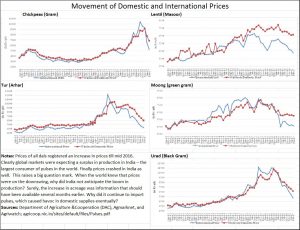 But then, spurred by higher prices and growing demand, more farmers began switching to growing pulses.
But then, spurred by higher prices and growing demand, more farmers began switching to growing pulses.
Higher production plus imports flooded the markets. The prices for pulses crashed. Farmers screamed. The government decided to slap import duties.
So has the government cared to help out the farmers? Not really. Yes, there was a bit of lip service doled out.
Yes, we have procured pulses and oilseeds from farmers, stated Parshottam Rupala, minister of state in the ministry of agriculture and farmers’ welfare, in the Lok Sabha on 28 March 2017.
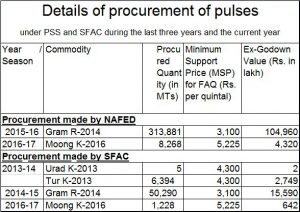 But if one filters out procurement for pulses from the list of commodities doled out by him in the annexure to his reply (see charts alongside), the quantity of pulses procured by various state bodies is pathetic — see the two charts alongside. Out of a total production of 22 million tonnes, barely a million tonnes were procured by state agencies.
But if one filters out procurement for pulses from the list of commodities doled out by him in the annexure to his reply (see charts alongside), the quantity of pulses procured by various state bodies is pathetic — see the two charts alongside. Out of a total production of 22 million tonnes, barely a million tonnes were procured by state agencies.
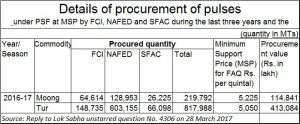 Clearly, the farmers want more.
Clearly, the farmers want more.
The government obviously has two options. If it begins to procure more, it destabilises the wheat and rice procurement market, and risks a shift of rice and wheat fields to pulses.
That would not be a bad idea, because growth in cereal consumption is already decelerating. It would also help the government move out of the support regime.
But moving out of the support regime would cut out political funding for many powerful people. It is doubtful if the government is prepared to do this. Just look at the defence against taxing agriculture given out by the government in the face of Niti Aayog’s suggestion that agriculture needs to be taxed.
In reality, agriculture is indeed a laundromat, as these columns have pointed out so often (http://www.firstpost.com/business/the-great-indian-irony-farmers-starve-while-politicians-agriculture-income-continue-to-rise-3360212.html and
http://www.firstpost.com/politics/demonetisation-atm-chaos-pm-modi-should-have-gone-after-8-lakh-wealthy-farmers-not-common-man-3104572.html). The way out is to prise agriculture out of the government, and leave it to the markets. It could start with identifying which declarations do not justify being shown as agricultural income. Even that exercise has not been done as yet. But that is something that we will discuss in part V.
Par IV next



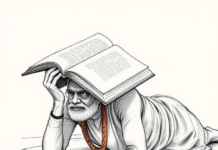


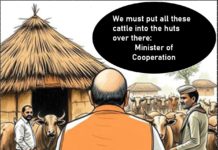






















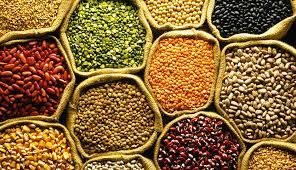



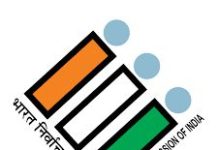







COMMENTS